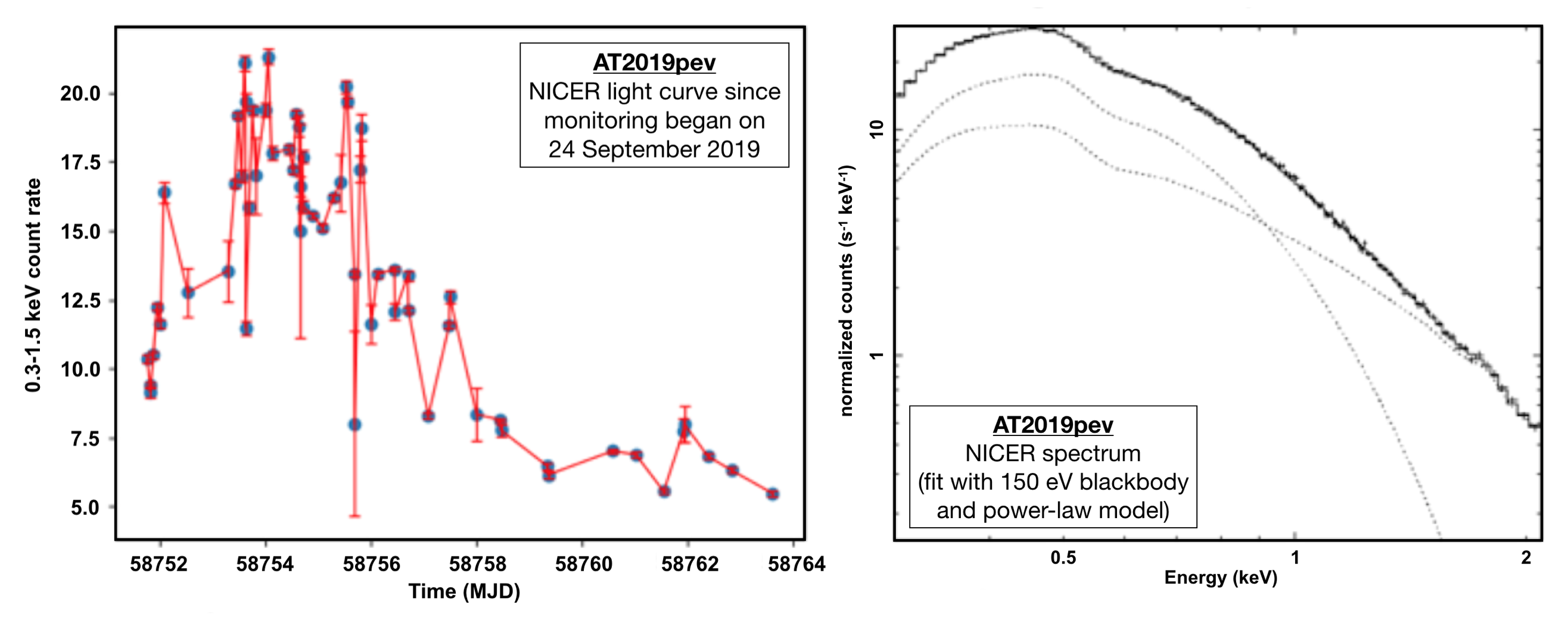NICER / ISS Science Nugget
for October 17, 2019
Recent AGN flare a member of a new class of transients
On 29 August 2019, the Zwicky Transient Facility discovered a new
transient flare at the position of a known accreting supermassive black
hole. Named AT2019pev, the flare in the broadband visible light was
accompanied by strong Bowen (ionized oxygen) fluorescence features,
which indicate the presence of high-velocity gas in the vicinity of the
black hole. These strong flares from Active Galactic Nuclei (AGN) that
produce Bowen fluorescence lines have recently been identified as a new
class of objects (Trakhtenbrot et al. 2019, Nature Astronomy, vol. 3, p.
229; see NICER ISS weekly science update for 17 January, 2019). We do
not yet know the origin of these extreme flares. Potentially, they are
caused by an unknown instability in the accretion disc that causes gas
to lose angular momentum and flood into the black hole. Or perhaps it is
associated with the tidal disruption of a solar-type star, and we are
watching the stellar debris quickly accrete into the black hole. While
the interpretation remains uncertain, it is clear that these new and
exotic transients associated with supermassive black holes are pushing
our understanding of AGN accretion to new extremes.
The astronomical community was alerted to the presence of AT2019pev on
24 September 2019 (Gezari et al.,
Astronomer's Telegram #13127). In just
14 hours from the posting of the telegram, NICER was able to observe
this quickly evolving transient. Amazingly, the 0.3-2 keV flux was very
bright (10-11 erg cm-2 s-1), nearly 10 times brighter than the X-ray flux
measured by NASA's Swift observatory just one day prior, and 100
times
brighter than an archival detection with ESA's ROSAT telescope.
NICER has accumulated approximately 30 ksec of exposure on AT2019pev
since that initial observation. The source spectrum originally showed a
150 eV thermal component and a weak hard tail (similar to some other
tidal disruption flares observed with NICER), but over a few days the
hard tail became more pronounced and now appears to be similar to other
unobscured AGN. We continue to monitor AT2019pev every few days,
together with facilities at other wavelengths. This transient is just
the fourth in this new class of AGN emissions including Bowen
fluorescence lines, and so we continue to monitor with interest.

NICER's initial data was reported in
Astronomer's Telegram #13132 by Kara et al.
<< Previous
Main Index
Next >>